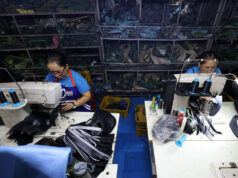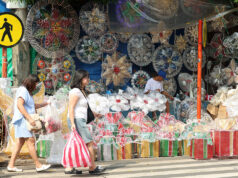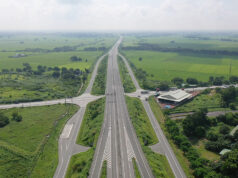Pandas and Art: 5 artists merge art and nature
PANDAS ARE CUTE, and so is any artwork that includes these chubby, clingy animals as the subjects. For this reason, the World Wide Fund for Nature (WWF) Philippines’ project is charming. But there is more to the visual exhibition: conservation.
To support its biodiversity preservation efforts, the WWF Philippines tapped renowned National Artist Benedicto “BenCab” Cabrera and artists Elmer Borlongan, Geraldine Javier, Mark O. Justiniani, and Jose Santos III to create limited-edition sculptures that highlight the organization’s iconic panda logo.
The campaign, called “Art, Heart, Earth,” is the WWF’s initial project and is done in collaboration with Tin-aw Art Management, Inc. and Secret Fresh.
“The Philippines is one of the 17 mega-diverse countries in the world, home to more than half of the world’s species. We are very excited to have five of the nation’s top artists join our battle to conserve nature in the face of climate change. We hope that through art, we continue to raise awareness of the urgent need to step up environmental action to protect earth’s biodiversity,” said Joel Palma, WWF-Philippines president and CEO.
The five artists played on the concepts of sustainability, living in harmony with nature, and people’s role in conservation in figurines — 30 pieces per design — which incorporate pandas.
Mr. Cabrera’s Kapit-Bisig highlights his iconic muse Sabel, this time hand in hand with a smiling panda. His work seems to show optimism for nature and our future. On the other hand, Borlongan’s Wildlife Rehabilitator features a very serious panda perched up on the shoulders of his signature bald man and his iconic, almost angry, stare.
Though they have different approaches for their pieces in the collection, the artists are united in their call to save the environment.
Mr. Borlongan, who lives in Zambales, 10 minutes away from the sea, said he has been a witness to how dynamite fishing can harm both the environment and fisherfolk who have lost limbs due to this practice. Mr. Borlongan — who champions the everyday man as his subject — was already creating art tackling this concern before the WWF project came along.
“We have to have discipline in cleaning up our surroundings and planting trees,” said Mr. Cabrera, whose BenCab Museum in Baguio looks out towards a tree-covered mountainside. He has planted many indigenous trees in his museum’s grounds.
Mr. Justiniani, known for playing tricks using mirrors in his works, created Kugos (Carry), which has a straightforward meaning: the ability of man to save animals. His work features a sad caretaker in a panda suit. It lets the audience question who is really sad, is it the man or the panda?
“If you think about the world, it will survive… so the environmental issue is actually a human issue. If we don’t take care of it, we will lose ourselves. We know we need to take care of the environment because that is our future, the future of human beings,” said Mr. Justiniani.
Mr. Santos III’s Natural Selection, meanwhile, is made using fiberglass reinforced with resin, wood, acrylic, and pen and ink on paper. Like his signature works that highlight found objects turned into artwork, Mr. Santos said that he sees parallels in his work and the WWF advocacies.
“I view this process as saving and salvaging these materials from their eventual death or uselessness. And this is where I see a certain parallel with the concerns of WWF in saving nature, saving wildlife, and saving the world as a more general concern,” he said.
Ms. Javier’s work, Home, is inspired by her community in the province, she said, stressing the importance of a sustainable environment. Her work shows a panda with plants that spring from its feet.
“Art, Heart, Earth” will be a series of collaborative projects between the WWF and Filipino artists. The pieces mentioned in the story have already been sold and all the proceeds will go to WWF Philippines. To know more about WWF Philippines and how to help, visit: https://www.facebook.com/WWF.Philippines/. — Nickky F. P. de Guzman



